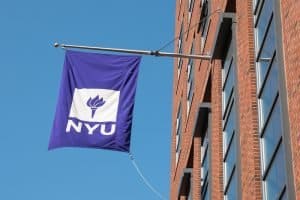Haverford vs Carnegie Mellon: Which University is Right for You?
If you’re considering applying to Haverford College or Carnegie Mellon University, you’re definitely on the right track to achieving your academic aspirations. But with two incredible and vastly different institutions such as these, how do you decide which one is the best fit for you? In this article, we will compare the differences between Haverford vs Carnegie Mellon across a range of factors, from academic programs to campus life and location, to help you make that decision.
Academic Programs Offered at Haverford and Carnegie Mellon
Both Haverford and Carnegie Mellon are renowned for their academic programs, but they differ vastly in terms of what they offer. Haverford is a small liberal arts college, which means that it offers a broad range of subjects across the arts and sciences. Carnegie Mellon, on the other hand, is a larger research university with a specific focus on science, technology, engineering, and mathematics (STEM) fields.

If you’re looking for a broader mix of courses in the humanities, social sciences, and natural sciences, Haverford might be the better fit for you. On the other hand, if you’re interested in exploring a high-tech, cutting-edge education with a focus on STEM, Carnegie Mellon could be a fantastic choice.
It’s worth noting that both Haverford and Carnegie Mellon offer a variety of extracurricular activities and opportunities for students to get involved outside of the classroom. Haverford has a strong emphasis on community service and social justice, with many student-led organizations dedicated to these causes. Carnegie Mellon, on the other hand, has a thriving arts scene, with numerous theater productions, music ensembles, and art exhibitions throughout the year. No matter which school you choose, you’ll have plenty of opportunities to explore your interests and get involved on campus.
Faculty and Teaching Quality at Haverford and Carnegie Mellon
At both Haverford and Carnegie Mellon, you’ll find engaging, accomplished faculty members who are passionate about their fields of study. However, the two schools offer very different learning environments.
Haverford prides itself on its small class sizes and intimate learning environment. All courses, including lectures and labs, are taught by professors rather than teaching assistants (TAs). This results in a more personalized, interactive learning experience, as students have more opportunities to build relationships with faculty members.
Carnegie Mellon, on the other hand, is a larger university that relies more heavily on TAs for undergraduate instruction. While this allows for a more diverse range of courses, it also means that students may have less interaction with individual professors, especially in lower-level courses.
Another key difference between the two schools is the emphasis placed on research. At Carnegie Mellon, research is a major focus, and many faculty members are actively engaged in cutting-edge research projects. This provides students with unique opportunities to get involved in research early on in their academic careers, and to work alongside faculty members who are leaders in their fields.
At Haverford, while research is still an important part of the curriculum, the focus is more on teaching and mentorship. Faculty members are dedicated to helping students develop critical thinking skills and a deep understanding of their chosen fields, rather than solely focusing on research output.
Campus Life and Extracurricular Activities: Haverford vs Carnegie Mellon
At Haverford, students are encouraged to get involved in a variety of extracurricular activities, including athletics, music, theater, and community service. The campus is known for its tight-knit, welcoming community, where students are free to explore their passions and pursue their interests outside of the classroom.
Carnegie Mellon has a different atmosphere, with a larger, more diverse student body and a wider range of extracurriculars to choose from. Sports, gaming, and the arts are all popular on campus.

One unique aspect of Haverford’s extracurricular offerings is the Bi-Co Orchestra, which is a joint orchestra. This orchestra provides students with the opportunity to perform in a full symphony orchestra, regardless of their major or level of experience.
On the other hand, Carnegie Mellon is known for its strong focus on entrepreneurship and innovation. The university offers a variety of resources and programs to help students develop their own startups and businesses, including the Swartz Center for Entrepreneurship and the Innovation Scholars Program.
Admission Requirements and Acceptance Rate Comparison
Admission to Haverford and Carnegie Mellon is highly competitive, with both schools receiving thousands of applications each year. However, the two schools have different admissions requirements and acceptance rates.
Haverford is a highly selective liberal arts college, with an acceptance rate of around 14%. The college looks for students with exceptional academic records and a demonstrated interest in the liberal arts. Carnegie Mellon, on the other hand, is a larger university with a slightly higher acceptance rate of around 11% and places a greater emphasis on a student’s math and science aptitude.
Despite the differences in acceptance rates and admissions requirements, both Haverford and Carnegie Mellon have a holistic approach to reviewing applications. This means that they consider not only a student’s academic achievements but also their extracurricular activities, essays, and letters of recommendation. Haverford, for example, values community involvement and social responsibility, while Carnegie Mellon looks for students who have demonstrated leadership potential and a passion for innovation.
It’s worth noting that both schools offer need-blind admissions, which means that a student’s financial situation is not taken into account during the admissions process. Additionally, both schools have generous financial aid packages to help students afford the cost of attendance. Haverford, for instance, meets 100% of the demonstrated financial need for all admitted students, while Carnegie Mellon offers a range of scholarships and grants to eligible students.
Student Diversity at Haverford and Carnegie Mellon: A Comparative Analysis
Both Haverford and Carnegie Mellon are committed to fostering a diverse and inclusive community of students from various backgrounds, ethnicities, and beliefs. However, the two schools have different approaches to achieving this goal.
Haverford has a smaller student body and places a great emphasis on a close-knit community. This allows for greater opportunities for engagement with students from diverse backgrounds. Carnegie Mellon, on the other hand, has a more diverse student body overall due to its larger size and more extensive academic offerings.

Despite their differences, both Haverford and Carnegie Mellon offer a range of resources and support for students from underrepresented backgrounds. Haverford has a Multicultural Scholars Program that provides mentorship and academic support for students of color, while Carnegie Mellon has a Diversity and Inclusion Office that offers programming and resources for students from diverse backgrounds. Both schools also have student-led organizations and affinity groups that provide a sense of community and support for students from underrepresented backgrounds.
Cost of Attendance: Which is More Affordable – Haverford or Carnegie Mellon?
Both Haverford and Carnegie Mellon are private institutions, which means that tuition and fees can be costly. However, the two schools differ in terms of cost.
The cost of attendance for a year at Haverford is around $86,540, while the cost of attendance at Carnegie Mellon is around $81,300. While both are sizable sums, Haverford’s higher cost reflects its smaller class sizes and more personalized learning environment. At Carnegie Mellon, students may get a comparable education at a slightly lower price tag.
It’s important to note that the cost of attendance at both schools is just an estimate and may vary depending on factors such as financial aid, scholarships, and housing options. Students should also consider additional expenses such as textbooks, transportation, and personal expenses when budgeting for college.
Furthermore, both Haverford and Carnegie Mellon offer various resources and opportunities for students to offset the cost of attendance. This includes work-study programs, research assistantships, and internships. Students can also apply for external scholarships and grants to help cover the cost of tuition and fees.
Location Comparison
Location can play a significant role in determining whether a university is the right fit for you. Haverford is located in the suburbs of Philadelphia, in a quiet, idyllic setting that emphasizes natural beauty. Carnegie Mellon, on the other hand, is located in the bustling city of Pittsburgh, which offers an urban environment with lots of cultural and social opportunities.
If you want to be in the heart of a bustling city with lots of things to do, Carnegie Mellon might be the better fit for you. If you prefer a quieter, more pastoral setting, Haverford could be a perfect choice.
It’s important to consider the impact of location on your academic and personal life. For example, if you’re interested in pursuing internships or job opportunities in a specific industry, you may want to choose a university located in a city with a strong presence in that field. On the other hand, if you’re looking for a more tight-knit community and smaller class sizes, a university in a suburban or rural area may be a better fit. Ultimately, it’s up to you to weigh the pros and cons of each location and decide which environment will help you thrive academically and personally.
Job Prospects After Graduation from Haverford vs Carnegie Mellon
Both Haverford and Carnegie Mellon have excellent job placement rates and offer competitive, cutting-edge programs in their respective fields. Haverford alumni tend to pursue careers across a range of sectors, including the arts, education, and public service. Carnegie Mellon alumni, on the other hand, are often recruited by technology and consulting firms and have a strong footing in the STEM industries.

However, it is important to note that Haverford has a strong emphasis on community engagement and social responsibility, which can lead to opportunities in non-profit organizations and social justice advocacy. On the other hand, Carnegie Mellon’s focus on innovation and entrepreneurship can lead to opportunities for start-ups and venture capital.
Additionally, Haverford’s small class sizes and close-knit community can provide students with personalized career guidance and networking opportunities. Carnegie Mellon’s location in Pittsburgh, a growing hub for technology and innovation, can also provide students with access to industry leaders and internships.
Alumni Network Strength: Which University Can Help You Build Better Connections?
Both Haverford and Carnegie Mellon have strong alumni networks, with dedicated career services offices that help students and graduates connect with alumni in their respective fields. However, because Carnegie Mellon has a more established reputation in STEM fields, its alumni network may be stronger in specific industries such as engineering and technology.
On the other hand, Haverford’s alumni network may be stronger in fields such as liberal arts, social sciences, and humanities due to the college’s focus on these areas of study. Additionally, Haverford’s smaller size and tight-knit community may make it easier for students and graduates to connect with alumni and build meaningful relationships. Ultimately, the strength of an alumni network depends on various factors, including the size of the university, the reputation of its programs, and the level of engagement and support provided by the alumni association.
Campus Infrastructure and Amenities: A Detailed Comparison between Haverford and Carnegie Mellon
Haverford and Carnegie Mellon have vastly different campus infrastructures and amenities. At Haverford, students are housed in beautiful, historic buildings with traditional architecture. The campus offers a variety of resources, including a fitness center, library, and student center.
Carnegie Mellon, on the other hand, has a more modern, technology-centric campus with state-of-the-art research facilities and computing centers. The university has a large, modern student center with numerous dining options and spaces for studying and relaxing.
Additionally, Haverford College has a strong emphasis on sustainability and environmental responsibility. The campus has several LEED-certified buildings, including the award-winning Lunt Hall, which features a green roof and geothermal heating and cooling systems. The college also has a student-run organic farm that provides fresh produce for the dining hall and local community.
Campus Safety Measures: How Safe Are You on the Campuses of Haverford vs Carnegie Mellon?
Campus safety is a top priority for both Haverford and Carnegie Mellon, but the two schools have different approaches to ensuring the safety of their students.
Haverford has a small campus with high visibility from campus security. The college also has a system of emergency call buttons placed throughout the campus. Carnegie Mellon also prioritizes campus safety and offers a range of resources such as a campus escort service and a mobile safety app to keep students safe.
Despite the differences in their approaches, both Haverford and Carnegie Mellon regularly review and update their safety protocols to ensure that they are effective and up-to-date. Additionally, both schools offer safety training and education programs to help students stay informed and prepared in case of an emergency.
Research Opportunities Available at Haverford vs Carnegie Mellon
Because both Haverford and Carnegie Mellon are highly preeminent research institutions, they offer incredible research opportunities for students across a range of fields.
Haverford students have access to state-of-the-art research facilities, including a well-equipped science center and research labs, where they can engage with faculty members on cutting-edge research projects. Carnegie Mellon has a similarly impressive array of research facilities, with well-funded labs in computer science, robotics, and engineering.

In addition to the research facilities available at Haverford, the college also offers a number of research grants and fellowships to support student research projects. These grants can provide funding for travel, equipment, and other research-related expenses, allowing students to fully immerse themselves in their research.
At Carnegie Mellon, students have the opportunity to work on interdisciplinary research projects, collaborating with faculty and students from a variety of fields. This allows for a more holistic approach to research and can lead to innovative solutions to complex problems.
International Students’ Experience Comparison at Haverford vs Carnegie Mellon.
International students bring a unique perspective and experience to campus, and both Haverford and Carnegie Mellon pride themselves on their diverse student bodies.
Haverford offers a range of support services specifically tailored to international students, including an orientation program, social events, and a network of peer mentors. Carnegie Mellon has a dedicated Office of International Education that provides similar resources and support.
However, there are some differences in the international student experience at Haverford and Carnegie Mellon. Haverford has a smaller student body, which allows for more personalized attention and support for international students. On the other hand, Carnegie Mellon has a larger international student population, which can provide a wider range of cultural perspectives and opportunities for networking.
Additionally, Haverford has a strong emphasis on interdisciplinary learning and encourages students to explore a variety of academic fields. This can be particularly beneficial for international students who may be interested in studying multiple subjects or pursuing a non-traditional academic path. Carnegie Mellon, on the other hand, is known for its strong programs in technology and the arts, which may be particularly appealing to international students with those interests.
Conclusion: Which University is the Best Fit for Your Needs?
So, which university is right for you? Ultimately, the answer to this question will depend on your individual preferences and goals. If you’re interested in a liberal arts education with an emphasis on personal attention and community, Haverford might be the perfect fit for you. If you want to explore cutting-edge research in the STEM fields or a larger and more diverse student body, Carnegie Mellon could be the better choice.
Ultimately, it’s up to you to weigh the pros and cons of each institution, visit the campuses, and talk to current students and faculty members. With quality programs from both institutions, you really can’t go wrong!
It’s important to remember that choosing a university is a big decision and should not be taken lightly. Consider factors such as location, cost, campus culture, and available resources. Don’t be afraid to ask questions and seek guidance from trusted advisors. Remember, the university you choose will shape your academic and personal experiences for years to come, so choose wisely!

































